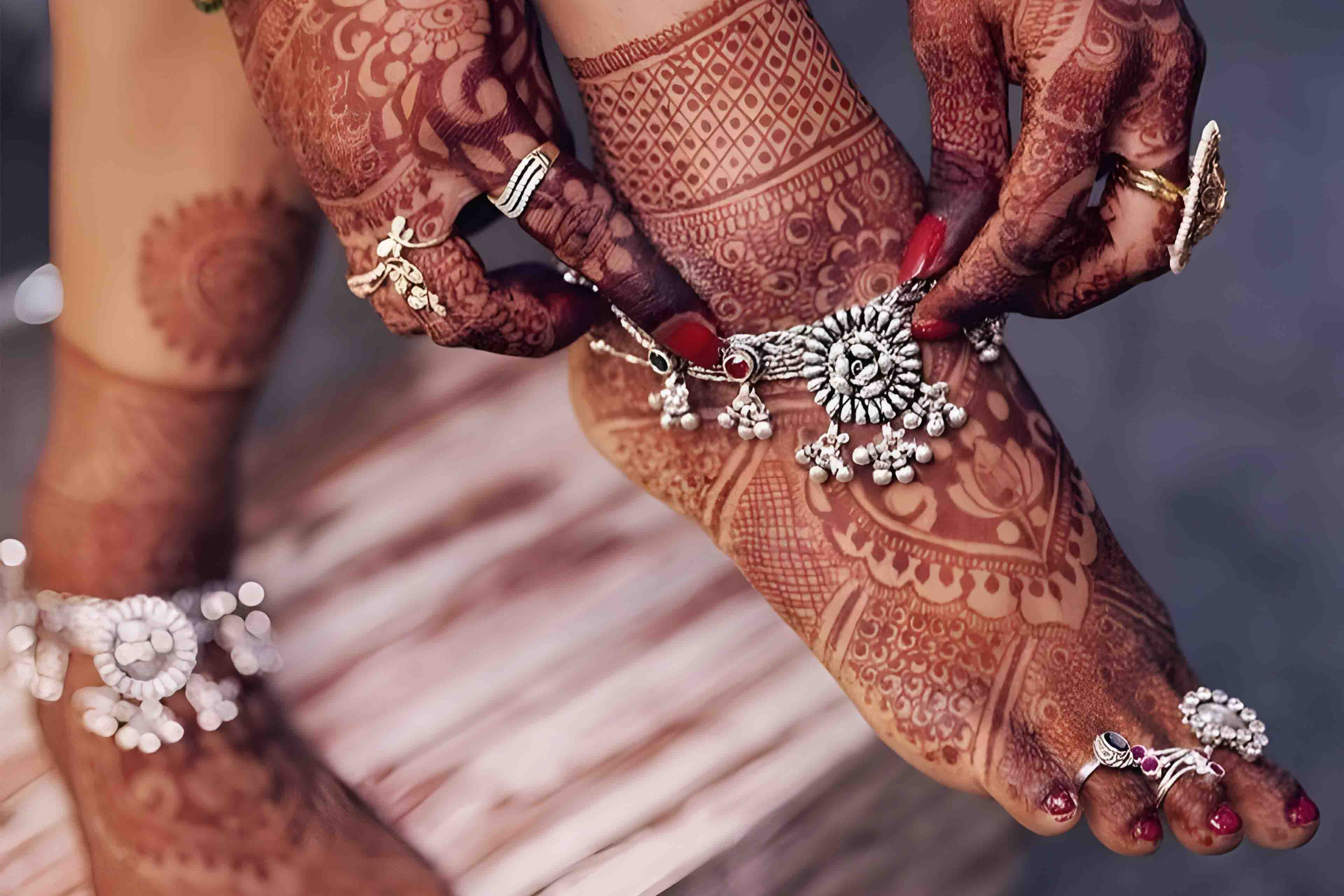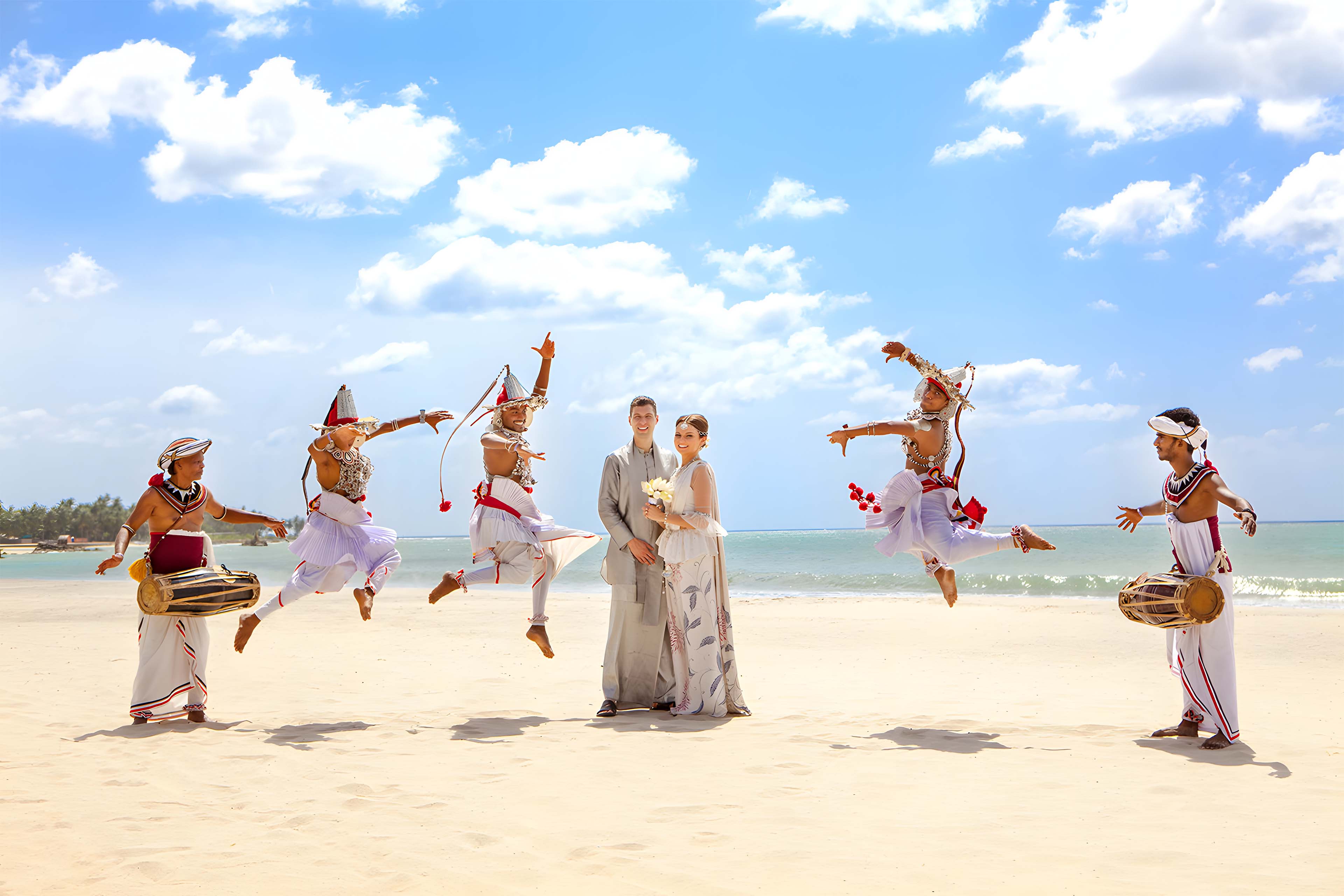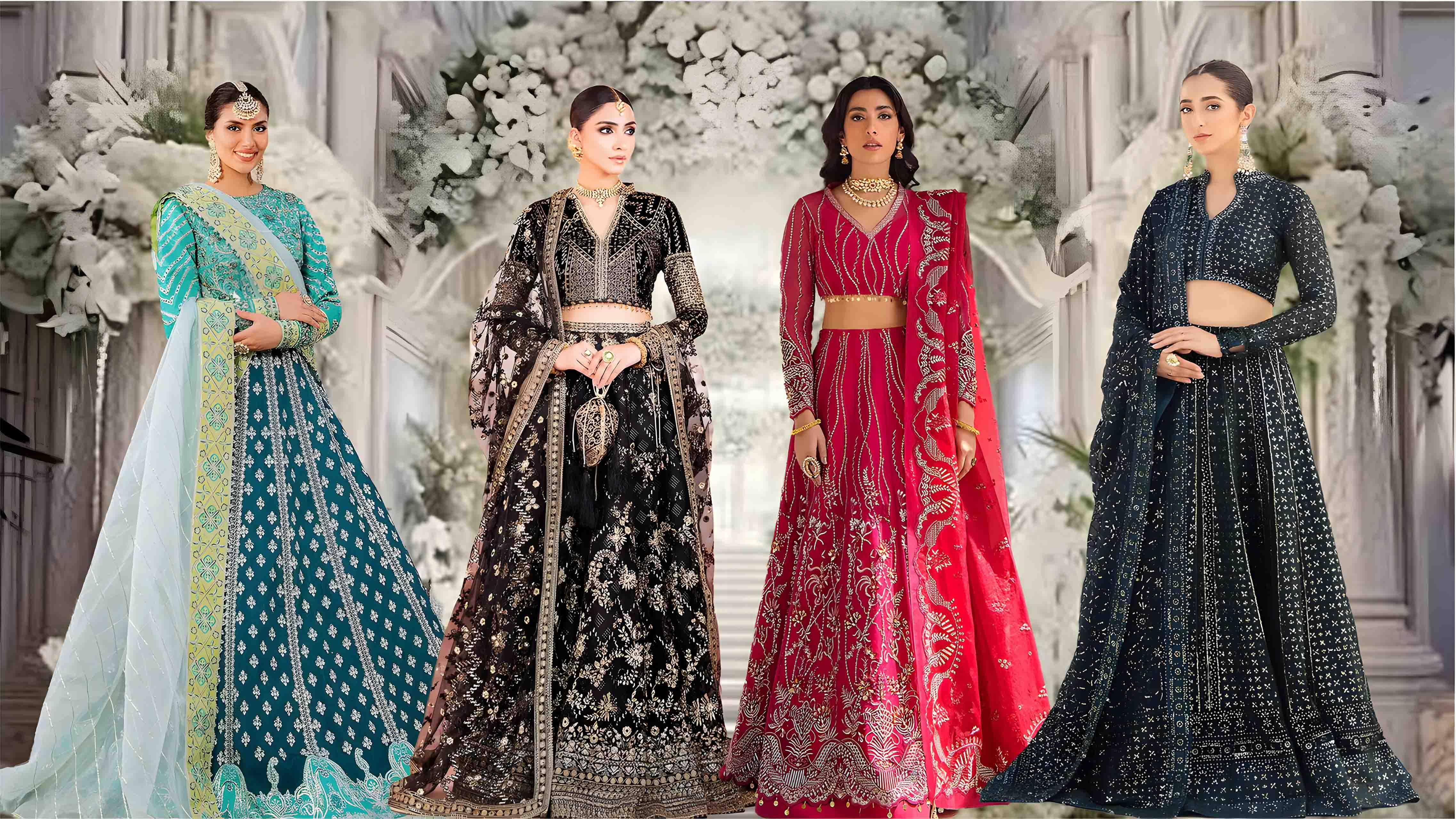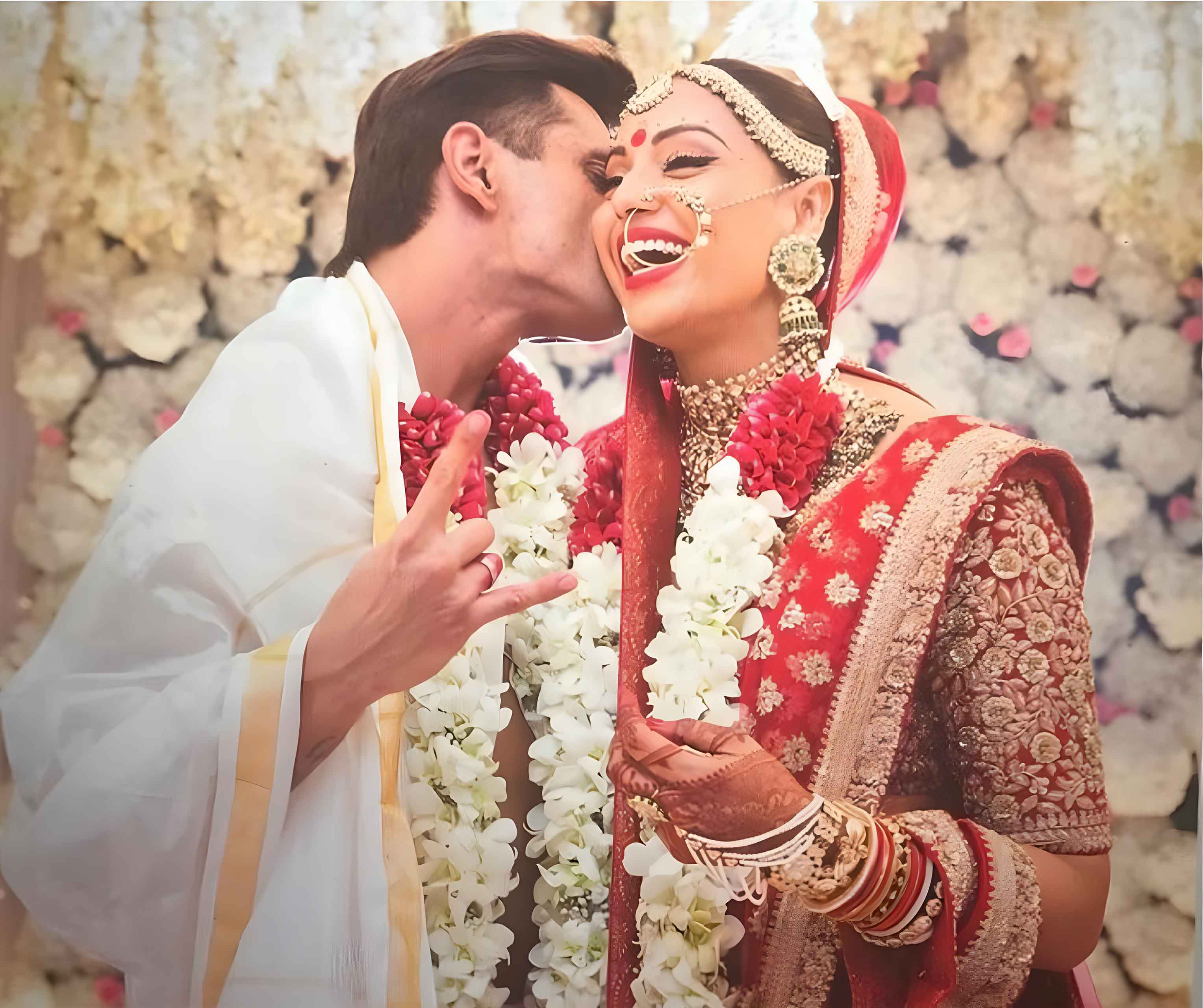Put a Ring On It? Not So Fast: South Asian Weddings & That Diamond Dilemma
Wondering what wedding rings *really* mean in South Asian weddings? From Indian to Pakistani, Bengali to Nepali, we break down the cultural context, modern trends and what U.S.-based couples need to know before they go ring shopping.

last updated: June 7th, 2025 | 7-minute read
Let’s get one thing straight: not every culture revolves around a sparkly little circle from Zales to prove it’s real. While Beyoncé made it sound universal, the truth is—the whole ring obsession is actually pretty Western. So if you’re wondering why your Desi friend’s wedding didn’t have a tearjerker proposal moment with a hidden photographer and a ring box drone-drop, take a breath. You didn’t miss it. It probably wasn’t a thing to begin with.
In South Asian weddings—whether Indian, Pakistani, Bengali, Nepali, or Sri Lankan—rings can play a role, but they’re not always center stage. Sometimes it's a toe ring. Sometimes it’s a mangalsutra. Sometimes it’s just vibes and ladoos. And that’s not a glitch in tradition—it is the tradition.
That’s where I come in: Laali Ladki—your resident wedding realist, culture decoder and go-to hype woman for figuring out Desi wedding chaos with your sanity intact. Whether you're a confused non-Desi plus-one, a second-gen bride trying to make sense of your nani’s opinions, or a wedding planner wondering if a ring exchange is mandatory at a Nikkah, I’ve got you. This blog is your no-BS guide to rings in South Asian weddings, tailored for the U.S. scene and all the mixed messages that come with it.
Let’s untangle the gold from the glam. Spoiler: the “Indian wedding ring” isn’t always what you think it is.
Section 1: Rings Weren’t Always the Thing: A Little History Lesson (No Auntie Required)
Before we all got hypnotized by Instagram proposals and carat counts, let’s remember: South Asian weddings existed way before diamonds were forever. And guess what? Finger rings weren’t the main characters.
In Indian weddings, symbolism runs deep—but not always on the ring finger. Brides traditionally wore toe rings (called bichiyas), which symbolized marital status and weren’t about showing off your fiancé’s salary. And don’t even get me started on the mangalsutra—a black and gold necklace that's been serving main-character energy long before Tiffany’s entered the chat. Add bangles, nose rings, and armlets into the mix, and you’ve got a full accessory lineup before anyone even thinks about a solitaire.
For Pakistani weddings, especially religious ones, the emphasis leans more on the Nikkah—the marriage contract—than on a sparkly exchange. A ring might happen, but it’s not mandatory or even expected in many families. The real ‘bling’ is the commitment, not the carat.
Bengali and Nepali weddings go heavy on jewelry (hello, gold everything), but rings specifically? They’re usually supporting cast, not leads. It’s more about anklets, ornate earrings, and layers of gold chains that scream “heritage,” not “hashtag sponsored.”
And Sri Lankan weddings? Think regal Kandyan bridal wear, intricate hairpieces, and ceremonial jewelry that’s steeped in tradition—not De Beers marketing. Rings might show up, but they’re not stealing the spotlight.
The takeaway? The idea of the wedding ring as the ultimate must-have is actually a remix—a modern twist on traditions that were already pretty extra without needing a diamond to validate them.
Section 2. The Western Influence Factor: From Mangalsutra to Moissanite
Here’s a wild thought: maybe not every life milestone needs a shiny receipt from Kay Jewelers. But thanks to colonization, capitalism, and a whole lot of cleverly lit movie montages, the West really did a number on how we think about proposals and what “forever” is supposed to look like.
Post-independence, many South Asian countries saw a slow creep of Western ideals into what were once deeply localized wedding customs. Enter: the Western-style engagement ring—sparkly, pricey, and suspiciously absent from our grandparents’ shaadi albums. Fast forward to today, and you’ve got diaspora couples trying to juggle mangalsutra ceremonies with diamond-ring reveals, all while their elders whisper, “This wasn’t our way.”
In the U.S., South Asians are blending timelines and traditions faster than a Bollywood-Hollywood crossover. Engagement rings are now common among Desi couples stateside—whether it’s a princess-cut solitaire from James Allen or a minimalist lab-grown gem from Etsy. Blame it on Instagram, Pinterest boards, or the inevitable influence of Western rom-coms where love isn’t official until there's a ring and a soft-focus lens flare.
And let’s not ignore the generational gap. Your mom might still wear her mangalsutra daily like it’s her marital chakra, while your cousin just got proposed to with a cushion-cut oval and a drone video. Both are valid. Both are iconic. But they come from very different scripts.
Bottom line? What counts as a South Asian wedding ring today is more hybrid than heritage. And honestly, that’s okay—as long as you know where it all came from and why it matters.
Section 3. Pre-Wedding Traditions Worth Knowing: When the Ring Deserves Its Own Party
Only South Asians could turn “putting on a ring” into an entire social event complete with choreographed dancing, emotional speeches, and possibly a goat. And honestly? We love to see it.
If you’re wondering when or how rings actually get exchanged in South Asian weddings, here’s the twist: it’s not always during the wedding itself. In fact, many communities have a whole pre-wedding event dedicated to it. In North Indian weddings, you’ll often hear about the Roka or Sagai—a ceremony where the families meet, blessings are exchanged, and yes, rings often make their debut. For some, this is the official engagement. For others, it’s more like “soft launch fiancé energy.”
Pakistani couples might host a Mangni, which ranges from low-key dinner to full-blown glam function with matching outfits and event photographers. Some include rings, some don’t. (Pro tip: just ask—no one will bite.)

Bengalis don’t always have a separate ring event, but you’ll often find engagement vibes wrapped into events like Paka Dekha or around Aiburobhat, where the bride or groom is celebrated solo. Think of it as their last supper before marital life, usually with a lot of fish and even more jewelry.
And Sri Lankan traditions? Less about rings, more about astrological consultations and pre-wedding blessings—but if a ring shows up, it’s just part of the aesthetic, not the whole plot.
Do you need to throw a separate party just to exchange rings? No. Should you do it anyway if you love the idea of a mini-shaadi before the big shaadi? Absolutely. At the end of the day, it’s your vibe, your budget, and your timeline. And hey, if you're planning one, don't forget—Laali.co has a whole directory of vendors who live for this kinda thing.
Section 4: Mixed-Culture Curveballs: When the Groom’s Family Doesn’t Care About “The Band”
If you’re Desi and your non-Desi fiancé is confused why your grandma keeps asking about the mangalsutra instead of the band—or vice versa—welcome to the messy middle of mixed expectations. Translation: don’t freak out if the groom’s side shows up without a ring... or five.
In mixed-culture weddings, one of the biggest points of confusion is when and if a ring is expected. Western guests might be waiting for a ring exchange during the ceremony. Desi elders might be waiting for the priest to bless the toe rings. Meanwhile, you’re trying to hold it all together without turning into a wedding version of Google Translate.
So here’s your survival guide:
- Desi vs. non-Desi dynamics: If one side sees the diamond as a symbol of eternal love and the other sees it as a nice-to-have accessory, don’t panic. Communicate early. Align expectations. And maybe have a group text without the aunties.
- Older generations vs. modern preferences: Grandma might still think a ring means the wedding is “official.” Your Gen Z cousin might think matching tattoos are the real commitment. Find a compromise—or don’t. It’s your call.
- For planners and vendors: If you’re coordinating a South Asian or fusion wedding, don’t assume every couple wants a Western-style ring exchange moment. Ask questions. Get the cultural context. Save everyone from an awkward ceremony pause.
And for your non-Desi guests? If they ask when “the ring part” is happening, just smile and say, “This wedding has layers—you’ll love it.”
Section 5: One Ring? Two? None? Let’s Break Down the Bling Timeline
Spoiler alert: South Asians remix traditions better than DJs remix Sufi tracks. So if you're looking for a clean-cut answer on whether you need an engagement ring and a wedding band, brace yourself—it’s not that kind of playlist.
In Western weddings, the timeline is pretty standard: romantic proposal ➝ sparkly solitaire ➝ walk down the aisle ➝ add a sleek wedding band to seal the deal. Neat, organized, hashtag-worthy. But in South Asian weddings? Chaos is part of the charm.
Some couples exchange rings at a Roka, Sagai, or Mangni. Others might skip the ring entirely and go full gold-jewelry-or-nothing at the actual ceremony. And yes, there are couples who do a full proposal with a Western-style ring and still don't exchange anything at the wedding itself. South Asian logic, baby.
Got a Nikkah coming up? Some pairs exchange rings after signing the marriage contract. Doing Saat Phere? You might hold off until the reception. Or not. There’s no universal moment when “the ring” must appear—and that’s kind of the point.
So what should you do? It’s all about the vibe you’re going for:
- One ring: Great for minimalists, budget realists, and people who don’t want to juggle jewelry mid-wedding.
- Two rings: Want a big proposal and a second ring moment during the shaadi? Live your double-ring dreams.
- No rings: If you're rocking a mangalsutra, kada, or nose ring instead—congrats, you’re still married. The diamond-industrial complex can chill.
No matter what you pick, there’s no wrong move—as long as it’s your move. And if you're still figuring that out? Bookmark this page and maybe give Laali.co a scroll. We’ve got vendor recs and inspo to help you make your own traditions—rings or not.

Section 6: Shopping for Shaadi Bling in the U.S.? Welcome to the Gold Rush (With Wi-Fi)
So you’re finally ready to buy the ring—or rings. Cue the deep breaths, the Pinterest boards, and that one aunty who’ll absolutely tell you what you’re overpaying for. Welcome to South Asian ring shopping in the U.S.: where culture, tradition, and carats collide.
Let’s start with the obvious: jewelry isn’t just jewelry in Desi weddings. Whether you're eyeing a classic 22k yellow gold band, a brilliant-cut diamond engagement ring, or heirloom-worthy Kundan and Meenaakari designs, your choices say something—not just about taste, but heritage. And sometimes, about budget pain too.
Shopping in the States? You’ve got options. Many couples go the Western route—big-box stores, online diamond retailers, or lab-grown alternatives (hello, moissanite). But for a cultural touch? Hit up Desi jewelers in places like Artesia, Edison, or Devon Avenue. They know the difference between a Polki and a zircon, and won’t look confused if you ask for a matching bajubandh or something to go with your lehenga.
Here are some real-talk tips before you swipe that card:
- Materials matter: 22k gold is the South Asian standard, but it scratches easily. Platinum = Western flex. Diamonds = universal bling. Know what you’re buying.
- Style sync: Match your ring’s vibe to your outfit and ceremony. If you’re going full regal for your Nikkah, don’t cheap out with something that screams office party.
- Ask questions: Authenticity, stone clarity, warranty—if your jeweler can’t explain, walk away. Transparency builds trust.
Need help finding South Asian-accessory-friendly vendors? Laali.co’s vendor directory has you covered—whether you're browsing for gold ring designs for men, gemstone settings, or full bridal jewelry sets. Think of it as your cheat sheet for shopping smart without getting culturally lost at the counter.
Bonus tip: Don’t ignore vintage or family pieces. Grandma’s gold bangle might not match your vibe now, but reworking an heirloom? That’s the kind of sustainable glam that lives rent-free in our hearts and our stories.
The Ring is What You Make It (Literally, Figuratively, Emotionally)
Some couples splurge on a $20,000 diamond with its own spotlight. Others exchange ladoos, hugs, or handwritten promises over chai. Guess what? Both are legit.
The truth is, there’s no single “Indian wedding ring” rulebook—especially for those of us navigating tradition, family expectations, and the bridal-industrial complex all at once. Whether you’re team solitaire, team toe ring, or team “I’ll pass and get a tattoo instead,” it’s less about doing it the ‘right’ way and more about doing what feels right for you.
So here’s your permission slip to ditch the pressure and keep the intention. Rings—or no rings—should reflect your love story, not your Instagram feed’s algorithm.
Still figuring it all out? Same. But don’t stress—Laali.co is here for the journey. We’ve got the vendors, inspo, and unfiltered tea to help you plan your wedding your way (without needing a ring to prove anything).
xoxo,
Laali Ladki
Featured
Desi Weddings
Find Culturally Capable Vendors
You’re not just having a wedding, you’re having a South Asian wedding. From hosting multiple events to incorporating ancient traditions, there’s a lot that will make your wedding unique. With Laali, you can find vendors who get it and have experience making South Asian weddings spectacular!
Connect With Us





Comments (0)
No comments yet. Be the first to comment!